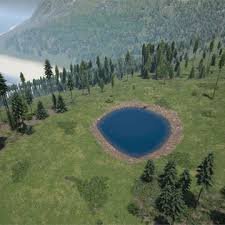Power plants use electric generators with voltages ranging from 6.3 to 36.75 kV to generate electricity (depending on the type of generators). To reduce losses and capital expenses for the development of electrical networks, electricity is sent across long distances in the power system at a higher voltage. As a result, before being delivered to the power system, the electrical energy generated by power plant generators is raised to a voltage of 110-750 kV.
The power system, particularly the distribution networks, is designed so that the maximum power of power plant generators matches the load capacity of the electrical networks in that section of the power system, and, more importantly, that it fully meets the needs of consumers even if one or more generators are turned off.
The magnitude of the voltage of the main lines through which the electricity generated by the generators is to be delivered to the power system is determined by the scale of the power plant - the number and capacity of the generators. It is proposed that a big nuclear power plant (NPP) providing the system with several GW of electrical energy be connected to backbone lines with a voltage of 750 kV, which can withstand a load of tens of GW.
Thermal power plants (CHP, TPP) and hydroelectric power plants (HPP) produce less electricity and are connected to the grid via 110, 220, 330, or 500 kV lines, depending on their capacity.
Electrical energy generated by generators at power plants is transformed to the required voltage value for onward transmission of electricity to customers at step-up substations.
At these substations, step-up transformers or autotransformers deliver electricity directly to consumer distribution substations or to the power system via high-voltage lines that pass through the substation switchgears.
An energy system is a complex network of interconnected nodes that keeps the balance between electricity generated by power plants and electricity used by users. This equilibrium may be upset in a specific portion of the power system when a generator at a power plant is turned down.
Consumers may experience a power outage if there is no method to balance the consequent power shortage in a specific area of the power system. As a result, all planned work involving the disconnection and integration of power plant generators into the network must take into account the power system's unique features and mode of operation as a whole, as well as its individual components.
When it comes to operating modes, the main goal is to ensure maximum power supply reliability for consumers while also taking into account any emergency scenarios.
Generators at power plants must be turned down in an emergency. The power system is structured in such a way that if a generator is unplugged from the electrical grid, the resulting power shortage can be compensated for by increasing the amount of electricity generated at other power plants, as previously indicated.




Nice one
.jpeg)
Please vote for me
https://steemit.com/hive-106951/@stanleyu/introduction-to-lakes-general
Downvoting a post can decrease pending rewards and make it less visible. Common reasons:
Submit